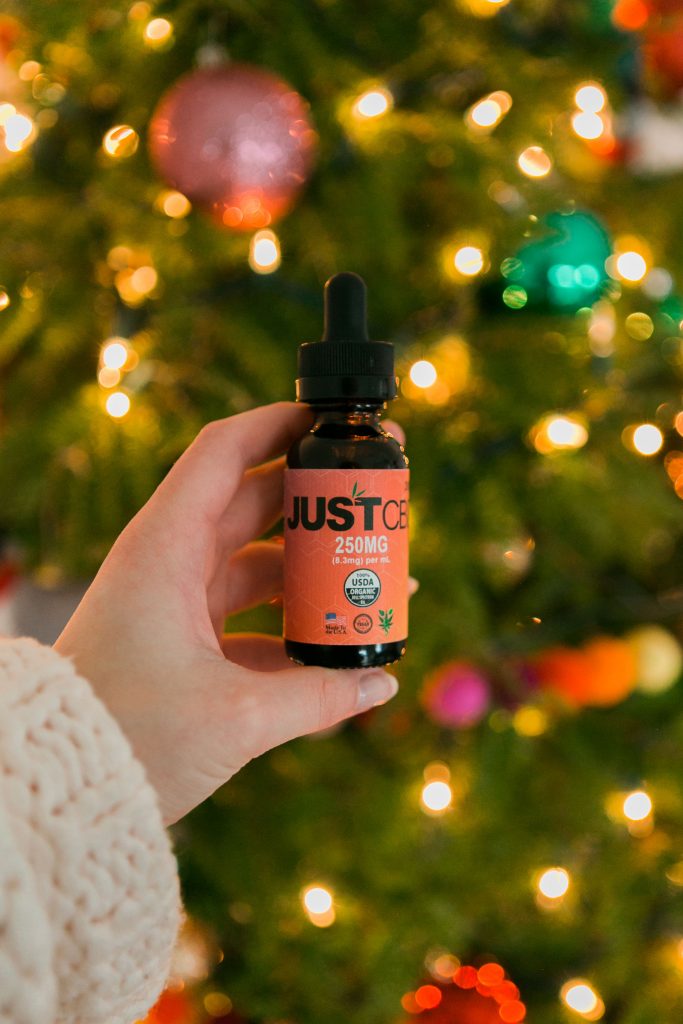Content
Cannabinoid Receptors
CB2 activation results in a discount in inflammatory mediator release, plasma extravasation, and sensory terminal sensitization. Activation of peripheral CB1 receptors ends in a reduction within the release of professional-inflammatory terminal peptides and a discount in terminal sensitivity. Activation of central CB1 receptors results in lowered dorsal horn excitability and prompts descending inhibitory pathways within the brain.

Location Of The Receptors
Whenever a molecule binds to both of the cannabinoid receptors, there are particular results that happen in the physique. Some of these effects really feel therapeutic, whereas others can inhibit the way in which that the physique functions.
Cb1 Receptors
The formation of granulomas round amoebae is thought to play a job in limiting dissemination. infections is unknown, several weeks could also be needed to ascertain clinical signs. In contrast, quite a few Acanthamoeba have been detected in brain sections from infected animals handled with THC. Staining of paired serial sections with anti-Mac-1 antibody demonstrated that Mac-1+ cells in automobile-handled animals were ample in focal areas of infected mind tissue.
Cb2 Receptors
Furthermore, the research of Raborn et al. (in press) point out that THC and CP55940 can transdeactivate migratory responsiveness to the chemokine RANTES/CCL5, suggesting that signaling by way of the CB2R leads to ‘cross-discuss’ with chemokine receptors. Thus, the CB2R may be a constituent element of a community of G-protein-coupled receptor sign transductional methods, inclusive of chemokine receptors, that act coordinately to modulate macrophage migration. It is well known that the brain and physique comprise receptors that bind to tetrahydro-cannabinol (THC) the lively ingredient in marijuana and that the physique naturally produces substances known as cannabinoids that bind to those receptors. There are two identified cannabinoid receptors, CB1 is located on neurons within the mind and spinal cord, and CB2 is situated totally on immune cells. Prior to the present research, it was unknown whether or not CB2 receptors could possibly be discovered on neurons within the mind and what role they may play in mind operate.

The Role Of Nutrition In Recovery From Covid-19
Cannabinoid Receptor 1 (CB1) receptors are mainly positioned in the brain and nervous system, in addition to within the lungs, liver, and kidneys. Our natural endocannabinoids and the cannabinoid THC from cannabis primarily bind with CB1 (due to their similar molecular construction).
Cb2 (Cannabinoid-2 Receptor)
Walter et al. demonstrated that 2-AG induced migration of microglia and that this occurred through the CB2R and abnormal-CBD-sensitive receptors, with subsequent activation of the extracellular sign-regulated kinase half sign transduction pathway. These investigators additionally demonstrated that microglia expressed the CB2R at the forefront of lamellipodia, in keeping with their involvement in cell migration.
How do you get all the taste of delicious chocolate chip cookies without all the extra calories? Just vape it! Get yours today.#Justcbd #Vape
Get yours here: https://t.co/a0JAC0UEPu pic.twitter.com/HXhh3AU0by— JustCBD (@JustCbd) May 20, 2020
Included among these are immunoglobulin (Ig) superfamily receptors, complement receptors, toll-like receptors, cytokine/chemokine receptors, opioid receptors and cannabinoid receptors. Thus, these cells appear to harbour a completely constituted system of endogenous cannabinoid ligands and cognate receptors. Activation of the CB2R on these cells appears to promote migration and proliferation.
This offers sufferers aid from ache, nausea, and despair, among other things. Though CB1 receptor activation helps the physique to experience much less ache by inhibiting the signal to the mind, the activation of CB2 receptors has an anti-inflammatory impact. Cannabinoids bind with these receptors to inhibit inflammation that may be brought on by continual opioids as properly, in accordance with research published by the American Pain Society. “Abnormal cannabidiol” is believed to create the identical effects that regular cannabinoids do, but don’t activate the CB1 or CB2 receptors.
Once within the brain, amoebae could also be destroyed by immune effector cells, corresponding to microglia. Alternatively, amoebae might cause a subacute infection that’s characterised by encystment and establishment of a persistent state associated with granuloma formation.
Inhaled hashish has been extensively studied in various pain syndromes with blended outcomes. Endocannabinoid receptors are found on cell surfaces; each CB1 & CB2 receptors serve multiple functions. CB2 receptor capabilities are dependent on its degree of expression on cell membranes and the type of signaling pathways involved. ¹ CB1 receptors are concentrated in the brain and central nervous system but are additionally sparsely situated in different components of the body. CB2 receptors are largely located in peripheral organs, particularly cells associated with the immune system.
) inhibition of nitric oxide (NO) launch from neonatal rat microglia subjected to activation with interferon-γ in live performance with bacterial lipopolysaccharide, which far exceeds the binding and agonist exercise at both of the CB receptors. In contrast, a minimal inhibitory effect on iNO manufacturing was exerted by the decrease affinity binding paired enantiomer CP56667. Consistent with the NO information, a differential inhibition of nicotinamide adenine dinuleotide phosphate-diaphorase activity in rat microglia was effected by CP55940 versus its paired enantiomer CP56667. Collectively, these immune pharmacological results supported a useful linkage between the CB1R and cannabinoid-mediated inhibition of iNO production by neonatal rat microglia.
Endocannabinoids are cannabinoids produced naturally inside the physique (Anandamide, AEA, and a couple of-arachidonoylglyerol, 2-AG). Once the cannabinoid has accomplished its job, it breaks down into varied enzymes and the cycle continues. Some of those features embrace helping to spice up our immune system, allocating nutrients to areas of our physique in need and help us increase our total wellbeing.

Exposure of microglia to either of the paired enantiomers CP55940 or CP56667 resulted in comparable inhibition of lipopolysaccharide-induced cytokine mRNA expression. A comparable inhibitory outcome was obtained when the paired enantiomers levonantradol and dextronantradol have been employed. Several research have documented that cannabinoids affect the migratory activities of macrophages and macrophage-like cells.
#JustCBD Father’s Day #Giveaway!
A lucky father will get a 750mg CBD Gummies jar, an Ultra Relief CBD Gel – 1000mg, a CBD Tincture, a CBD Capsules jar, a CBD Protein Bar, and a JustCBD T-Shirt.Click on the link below & follow the instructions ⬇️⬇️https://t.co/TkwC2I1vqa pic.twitter.com/NrkSBFOhK5
— JustCBD (@JustCbd) June 18, 2020
The keys are both naturally occurring endocannabinoids in our ECS [endocannabinoid system] as well as phytocannabinoids inside the hashish plant. These chemical compounds also happen in crops similar to echinacea, a typical different medicine used as an immune booster and bought in health food stores throughout the nation. Readers have already realized that molecules like cannabinoids and terpenes fit into special receptors throughout the endocannabinoid system, or ECS. A researcher or physician would say that molecules like THCactivate explicit cannabinoid receptors.
CB2 has been largely seen in immune cells while additionally being found in a number of neurons. During irritation, there is truly an elevated number of receptors for activation, showing the position of the receptor within the strategy of homeostasis. The collective findings refute the idea that the one cannabinoid receptor that has a functionally related position within the CNS is the CB1R.
Mounting evidence suggests that there are novel cannabinoid receptors that is, non-CB1 and non-CB2, which are expressed in endothelial cells and in the CNS. In 2007, the binding of a number of cannabinoids to the G protein-coupled receptor GPR55 within the brain was described. That is, antigen processing and/or chemotaxis by these cells could also be particularly prone CBD Topicals to cannabinoids in a mode linked to activation of the CB2R. To handle this chance, we have employed in vivo and in vitro rodent models of Granulomatous Amoebic Encephalitis, a continual progressive infection of the CNS that is attributable to Acanthamoeba culbertsoni (A. culbertsoni).
The paucity of Mac-1+ cells at focal sites of Acanthamoeba an infection within the brain of mice handled with THC suggests that these immune cells either don’t migrate to infected areas or are selectively targeted by the Acanthamoeba and destroyed. Peritoneal macrophages, macrophage-like cells and microglia can be pushed sequentially in response to multiple indicators from ‘resting’, to ‘responsive’, ‘primed’ and ‘totally’ activated states, a process that mimics occasions in vivo (Figure 1).
- Consistent with the NO information, a differential inhibition of nicotinamide adenine dinuleotide phosphate-diaphorase exercise in rat microglia was effected by CP55940 versus its paired enantiomer CP56667.
- Exposure of neonatal rat cortical microglia to THC resulted in lowered quantities of lipopolysaccharide-induced mRNAs for IL-1α, IL-1β, IL-6 and tumour necrosis factor-α.
- In distinction, a minimal inhibitory impact on iNO production was exerted by the decrease affinity binding paired enantiomer CP56667.
- Puffenbarger et al. prolonged these studies on the results of cannabinoids on ‘absolutely’ activated microglia and indicated that the inhibition of the inducible expression of pro-inflammatory cytokines was exerted by way of a non-CB1, non-CB2 receptor course of.
- ) inhibition of nitric oxide (NO) release from neonatal rat microglia subjected to activation with interferon-γ in concert with bacterial lipopolysaccharide, which far exceeds the binding and agonist activity at either of the CB receptors.
- Collectively, these immune pharmacological results supported a functional linkage between the CB1R and cannabinoid-mediated inhibition of iNO production by neonatal rat microglia.
CB2 receptors are mainly expressed on T cells of the immune system, on macrophages and B cells, and in hematopoietic cells. In the brain, they’re mainly expressed by microglial cells, the place their position stays unclear. During activation, microglia upregulate an array of cell-floor receptors that could be critical in microglial regeneration and/or degeneration of the CNS.
If components, such as illness or pain, throw off homeostasis within the body, the ECS kicks in and helps the body return to a more perfect status. CBD seems to inhibit the binding of THC to CB1 receptors in the areas of the brain related to anxiousness. This is done by “distracting” the enzymes which are there to interrupt down the endocannabinoids. In other phrases, endocannabinoids have a longer-lasting effect on cannabinoid receptors. Cannabidiol, or CBD, is one other distinguished cannabinoid but has no psychoactive impact.
In 1992, it was discovered that the ECS produces an endocannabinoid throughout the brain calledanandamide. This inside cannabinoid, which was discovered by Dr. Raphael Mechoulam at Hebrew University in Jerusalem, binds to CB1 receptors in the mind and nervous system and, to a lesser extent, CB2 receptors within the immune system. Cannabinoid receptors kind 1 (CB1) are located at multiple areas in the peripheral and central nervous system, whereas CB2 receptors are situated on inflammatory cells (monocytes, B/T cells, mast cells).
Finally, for the reason that kinetics of CB1R and CB2R expression by microglia are distinctive, activation of the two receptors by endogenous and/or exogenous cannabinoids might lead to disparate practical outcomes. CB2 receptors are also discovered all through the gastrointestinal system, where they modulate intestinal inflammatory response. Thus, CB2 receptor is a possible therapeutic target for inflammatory bowel ailments, similar to Crohn’s disease and ulcerative colitis.
These receptors, referred to as CB1 and CB2, work like a lock and key when flooded with cannabinoids, corresponding to after a patient smokes, vaporizes, or ingests cannabis flowers, a focus, or an edible. When an individual consumes hashish products, these phytocannabinoids mimic the roles of the body’s personal endocannabinoids like Anandamide and a couple CBD Vape Oil of-AG to govern the physique’s methods. The blood carries the compounds to the brain and different organs throughout the physique, introducing them to cannabinoid receptors. Like a key matches right into a lock, cannabinoids are designed to hyperlink with cannabinoid receptors.
When the body synthesizes endocannabinoids or hashish-derived phytocannabinoids are consumed, the cannabinoids flood the bloodstream looking for ECS receptors in the brain and elsewhere that they will bind with. Cannabinoid Receptor 2 (CB2) receptors are discovered mainly within the immune system, with a heavy focus in the spleen and within the gastrointestinal system. CB2 receptors — which bind greatest with the endocannabinoid 2-AG and hashish’ CBD — are concerned within the regulation of appetite, immune system functions like inflammation and ache administration.

Stefano et al. reported that acute publicity to anandamide resulted in transformation of macrophages from an amoeboid and motile state to that of a rounded and non-motile conformation. These investigators proposed that the remodeling events were linked to the CB1R because the CB1R-selective antagonist SR141716A blocked the transformation. Sacerdote et al. demonstrated that in vivo and in vitro therapy of rat peritoneal macrophages with CP55940, a full agonist at each CB1R and CB2R, resulted in decreased migration in vitro to the peptide formal-methionyl-leucine-phenylalanine. It was indicated, however, that whereas both the CB1R and CB2R had been concerned on this process, the cannabinoid-mediated impact was linked primarily to the CB2R.
Unlike CB1, the CB2 receptor isn’t sometimes found on neurons, apart from within the brainstem and hippocampus. However, non-neuronal mind cells known as microglia seem to specific CB2 receptors in response to inflammation and injury. Endogenous cannabinoids (a.k.a. endocannabinoids) are lipid-primarily based retrograde neurotransmitters produced by the physique. Endocannabinoids bind to CB1 and CB2 receptors situated in the endocannabinoid system (ECS) throughout the complete physique.
External cannabinoids interact with our endocannabinoid system as nicely, which is how CBD and THC produce their effects when ingested into our bodies. Throughout this blog submit, we’re going to concentrate on two receptors which might be extraordinarily important in our bodies for interacting with CBD, the CB1 and CB2 receptors, and understand how CBD causes these interactions to occur. There are currently two identified subtypes of cannabinoid receptors, termed CB1 and CB2. The CB1 receptor is expressed primarily in the mind (central nervous system or “CNS”), but also in the lungs, liver and kidneys. The CB2 receptor is expressed primarily within the immune system and in hematopoietic cells, however further analysis has found the existence of these receptors in elements of the brain as properly.
culbertsoni is a free-dwelling amoeba that may infect both immune-competent and immune-suppressed individuals (Martinez, 1993; Marciano-Cabral and Cabral, 2003) and has two morphologic varieties as part of its life cycle, a trophozoite and a dormant cyst. culbertsoni could be the nasal passages, the lower respiratory tract, open wounds or ulcers within the pores and skin, or any mucosal or serosal surface (Martinez, 1993).
These features affect internal surroundings stability, which might help the body obtain homeostasis. Homeostasis is a secure equilibrium for physiological processes, an total steadiness throughout the body between all of its elements.
The function of endocannabinoids, as such, play an important position in inhibiting unnecessary immune motion upon the pure gut flora. Dysfunction of this method, perhaps from excess FAAH activity, may lead to IBD. CB2 activation can also have a job within the remedy of irritable bowel syndrome. So what are the keys that unlock these receptors to enhance physiological functions?
The existence of extra cannabinoid receptors has lengthy been suspected, because of the actions of compounds similar to abnormal cannabidiol that produce cannabinoid-like effects on blood stress and irritation, but do not activate either CB1 or CB2. Other molecular biology studies have suggested that the orphan receptor GPR55 should in fact be characterised as a cannabinoid receptor, on the premise of sequence homology at the binding site. This profile as a definite non-CB1/CB2 receptor that responds to a variety of both endogenous and exogenous cannabinoid ligands, has led some teams to suggest GPR55 should be categorized because the CB3 receptor, and this re-classification might follow in time. GPR119 has been suggested as a fifth potential cannabinoid receptor, while the PPAR household of nuclear hormone receptors also can respond to certain forms of cannabinoid. InflammationWhen you expertise irritation, generally speaking, it is a very normal and healthy thing to happen.
The 4 Best Memorial Day Recipes for #Veganshttps://t.co/MvS15tsxGI#Justcbd #vegan #cbd
— JustCBD (@JustCbd) May 13, 2020
In contrast, foci in brain tissue from infected, THC-handled mice have been replete with amoebae but contained few Mac-1+ cells. Comparable outcomes had been obtained when paraffinized brain sections have been subjected to haematoxylin and eosin staining (Figure 2, unpublished knowledge). For car-handled mice, numerous foci of individual amoebic trophozoites surrounded by clusters of cells that resembled microglia morphologically had been observed. Assessment of replicate sections utilizing isolectin B4, a marker for microglia, indicated that cells clustering around amoebae had been predominantly microglia. In distinction, for THC-treated mice, individual amoebic trophozoites have been dispersed in the olfactory lobe and frontal areas of the mind within the absence of immune cell aggregates.
Research has discovered that CBD interacts with cannabinoid receptors in a extra complicated way than THC. THC has a mess of very robust links to the CB1 receptors, and a few, however not so strong, links to the CB2 receptors. Rather than binding to them, CBD appears to inhibit the binding of different cannabinoids to those receptors and alter their effects. As more research is finished on the endocannabinoid system, we are understanding more about these receptors. It appears that THC has the identical infinite links to the CB1 and CB2 receptors as some endocannabinoids (to CB1 greater than to CB2).
Recently, it has been acknowledged that the cannabinoid receptor CB2 may play a functionally related position in the central nervous system (CNS). This role is mediated primarily through microglia, a resident population of cells within the CNS that is morphologically, phenotypically, and functionally associated to macrophages.
These observations counsel that the CB2R is expressed ‘on demand’ and that the modulation of CB2R ranges is a characteristic frequent to cells of macrophage lineage as they participate within the inflammatory response. Furthermore, the relatively excessive ranges of CB2R recorded for microglia when in ‘responsive’ and ‘primed’ states suggest that these cells exhibit a functionally relevant ‘window’ during which they are most susceptible to the action of cannabinoids.

Pain reduction is among the commonest results of CB1, though it can technically be helped with CB2 activation as well. Typically, as THC activates this receptor, cannabis is a greater source of ache relief than CBD would be. CBD just isn’t able to activating the CB1 receptors, so it can be used to scale back the irritation that CB2 receptors take over, however the ache is just soothed by way of THC and the activation of CB1.
The CB2R antagonist SR prevented this decrease, suggesting a functional linkage to the cognate receptor. Walter et al. found that the endocannabinoid 2-arachidonylglycerol (2-AG) triggered migration of microglia and that the CB2R was concerned on this effect. Franklin and Stella demonstrated that arachidonylcyclopropylamide, an agonist selective for the CB1R, induced a dose-dependent improve in migration of mouse microglial cell line BV-2.
Using this in vitro mannequin, it has been shown that ranges of CB2R mRNA and protein are modulated differentially in relation to cell activation state (Carlisle and Cabral, 2002). The CB2R is not detected in ‘resting’ cells, is present at excessive ranges in ‘responsive’ and ‘primed’ cells, and is recognized at significantly diminished ranges in ‘absolutely’ activated cells. In contrast, the CB1R is present in microglia at comparatively low ranges and is expressed constitutively in relation to cell activation state.
Furthermore, the collective results counsel that the CB2R plays a important immune useful function in the CNS. Technically, this technique is just being supplemented when a person consumes cannabinoids, terpenes, or other chemical substances from an herb like a cannabis plant that happen to bind with the receptors within this technique.

In contrast, two antagonists of the CB2R (SR and cannabinol) in addition to two antagonists of ‘irregular-CBD-sensitive’ receptors (O-1918 and CBD) prevented the response. Based on these collective results, Franklin and Stella advised that CB2Rs and ‘irregular-CBD-sensitive’ receptors regulated the migration of microglial-like cells. Recently, Raborn et al. (in press) demonstrated that THC and CP55940 mediated inhibition of mouse peritoneal macrophage chemotaxis to the chemokine RANTES/CCL5 and that this event was linked to the CB2R. The CP55940-mediated inhibition was reversed by the CB2R-selective antagonist SR but not by the CB1R-selective antagonist SR141716A. In addition, THC treatment had a minimal impact on the chemotactic response of peritoneal macrophages from CB2R knockout mice.
While CB1 is activating by way of the use of THC from an exterior source, the CB2 receptors are solely found within the brain when the body is injured or experiences inflammation. That signifies that THC binds to cannabinoid receptors in your physique and mimics the operate and position of endocannabinoids (cannabinoids produced by your physique). On the other hand, the research also found that CBD usually acts as a CB1 and CB2 antagonist, blocking cannabinoid receptors quite than activating them. CB2 receptors, on the other hand, are largely found on immune cells, which flow into all through the physique and brain through the bloodstream.
When you see components of your body swell up, it is that section of your physique that’s getting full of a liquid that has immune cells which might be making an attempt to protect you from pathogens in your body. The endocannabinoids that interact with the CB2 receptor be sure that the inflamed area doesn’t unfold, and doesn’t overstay its welcome. Chemical imbalances and brain harm could cause your brain to not acknowledge when the risk is over. Hemp oil helps improve the functionality of your CB2 receptor, making inflammation a factor of the past.
The endocannabinoid 2-arachidonylglycerol has been reported to stimulate a chemotactic response from these cells via the CB2R. It is postulated that these exogenous cannabinoids superimpose an inhibitory effect on pro-chemotactic endocannabinoids which might be elicited in response to Acanthamoeba.
The CB1 receptor (CB1R) is constitutively expressed at low levels whereas the CB2 receptor (CB2R) is expressed at greater levels and is modulated in relation to cell activation state. The comparatively high ranges of the CB2R correspond with microglia being in ‘responsive’ and ‘primed’ states, suggesting the existence of a ‘window’ of practical relevance during which activation of the CB2R modulates microglial activities. Signature activities of ‘responsive’ and ‘primed’ microglia are chemotaxis and antigen processing, respectively.
Puffenbarger et al. prolonged these research on the results of cannabinoids on ‘totally’ activated microglia and indicated that the inhibition of the inducible expression of professional-inflammatory cytokines was exerted via a non-CB1, non-CB2 receptor course of. Exposure of neonatal rat cortical microglia to THC resulted in lowered quantities of lipopolysaccharide-induced mRNAs for IL-1α, IL-1β, IL-6 and tumour necrosis factor-α. Of these cytokine mRNAs, the response of that for IL-6 was exquisitely sensitive to THC therapy.
It is powerful sufficient to decrease the blood pressure and reduce inflammation, much like CBD. Anandamide, which was the first endocannabinoid studied by Professor Raphael Mechoulam, is believed to interact with this receptor, found within the Central Nervous System.

